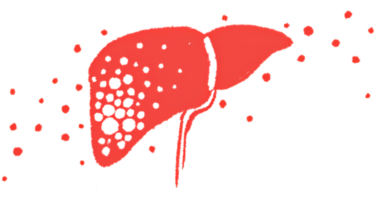Women Get Inhibitors, Too, and Should Be Tested Regularly

Recently, I was browsing the website of the National Hemophilia Foundation and came across a series of videos encouraging people with hemophilia to have regular testing for inhibitors. As I watched the videos, it occurred to me that women with hemophilia don’t talk much about inhibitors.
Perhaps this is due to women being more likely to have milder forms of the disease and the low incidence — 5-8 percent — of people with mild or moderate forms of hemophilia developing inhibitors.
What’s an inhibitor?
Simply put, an inhibitor is an antibody that attacks invaders in the body. When a person with hemophilia develops an inhibitor, the antibodies fight against factor replacement products infused to help the blood to clot.
When someone with hemophilia A or B develops an inhibitor, it attacks the infused factor VIII or factor IX products. Their body struggles to form clots, even with medication. As a result, the person may continue to bleed. If they remain undiagnosed, the results could be disastrous.
The first sign of an inhibitor is bleeding that doesn’t stop, even when a substantial amount of factor product has been given.
Early diagnosis is important
Families who have to cope with inhibitors often report fears of emergency medical situations. They wonder what will happen if medical professionals are unable to control bleeding. However, though inhibitors are challenging to deal with, an undiagnosed inhibitor is worse.
The earlier inhibitors are caught, the better medical professionals can successfully treat or eradicate them. The Centers for Disease Control and Prevention recommends that those with hemophilia and von Willebrand disease type 3 receive annual testing for inhibitors. As inhibitors can develop at any age, this test should be a compulsory part of a yearly checkup.
Women also need inhibitor testing
Anyone with hemophilia can develop an inhibitor. Women with hemophilia and the medical professionals who treat them must acknowledge this reality. I know men who receive annual testing and some women who don’t. If you or your family member with hemophilia — female or male — is not being tested regularly, please consider discussing this with your healthcare provider. Your health and safety are important, and you deserve the best and earliest care possible.
***
Note: Hemophilia News Today is strictly a news and information website about the disease. It does not provide medical advice, diagnosis, or treatment. This content is not intended to be a substitute for professional medical advice, diagnosis, or treatment. Always seek the advice of your physician or another qualified health provider with any questions you may have regarding a medical condition. Never disregard professional medical advice or delay in seeking it because of something you have read on this website. The opinions expressed in this column are not those of Hemophilia News Today or its parent company, Bionews Services, and are intended to spark discussion about issues pertaining to hemophilia.







Paul Clement
Some women with hemophilia should get annual testing for inhibitors—others do not need annual testing. And there is not much discussion about women with hemophilia and inhibitors because it is rare. The 5% to 13% incidence numbers for inhibitors in non-severe patients combine both moderate and mild hemophilia, and moderates are much more likely to develop inhibitors than those who are mild (which include almost all women with hemophilia). This is because, with very rare exception, only those exposed to clotting factor concentrates develop inhibitors. (A person can develop inhibitors to their own factor—this is called acquired hemophilia—but the incidence is extremely low: 0.2 to 1/1,000,000). Eighty percent of women with hemophilia have factor levels above 30% (this is using the definition of mild hemophilia being 6% to 49%, not the CDC definition of 6% to 30%.) Most of these women have not used clotting factor and do not need annual testing for inhibitors. All women carriers should:
• Know their factor levels and have them tested several different times (factor VIII level can vary in response to hormones, and stress)
• Be genotyped (certain factor VIII mutations have a higher risk of developing inhibitors).
• Be tested for inhibitors before surgery or if their bleeding patterns change or bleeds increase in frequency.
• Have a DDAVP challenge test to gauge response to DDAVP and, whenever possible, use DDAVP (such as Stimate) to control bleeds and avoid exposure to clotting factor.
• Know risk factors: High doses of factor around times of surgery, infection and times of other “danger signals,” increases your risk of developing inhibitors and regular testing for inhibitors is in order.
• Even if you test positive for inhibitors, they may be directed solely at the infused factor and not your own factor, and have little effect on your bleeding patterns. (More commonly though, there is crossover and your own factor levels will also be affected).
• In some cases, inhibitors in mild hemophilia may cause bleeding patterns similar to severe hemophilia (joint and muscle bleeds). In other cases, bleeding patterns are more similar to acquired hemophilia with bleeding into the skin and gastrointestinal tract, which can be life-threatening.
G Shellye Horowitz
Thank you so much, Paul, for your reply.
I think one of the most important points you bring up is that inhibitor testing is probably not needed if there is no factor product use. Thank you for voicing this.
Your other points are also helpful. Genotyping does make a difference and I encourage people to delve into the available research to better understand their genotype.
The only thing I would wonder about is the actual % of women with mild hemophilia and factor levels below 30%. We are at a juncture where this information seems to be evolving. Use of the chromogenic testing a bit more frequently is changing diagnostics (based on levels) and there are still many women who have not been tested at all or should be tested with the chromogenic factor assay (based on a misalignment between bleeding genotype and phenotype). I would caution that, over time, we may have a different understanding of diagnosis and women.
Women are starting to be placed on prophy - it is a newer understanding. Many have higher levels, even in the 30's. I think it will be interesting to see if the inhibitor data on women is impacted as factor use among mild women increases. For that matter, it would also be interesting to see if the same happens in mild men who are utilizing factor products more frequently.
Thank you, again. I always appreciate your thoughtful, informative, comments.